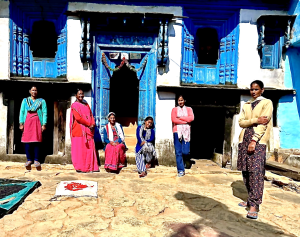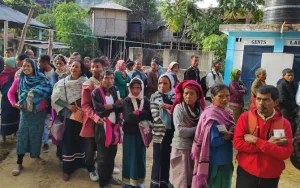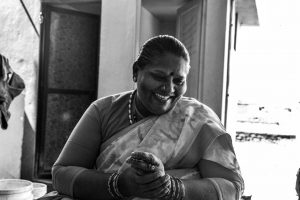Intersectionality, The Missing Link In The Women’s Reservation Bill
Intersectionality has long been ignored in India’s mainstream feminist movement as a critical issue

“The basis of their (BSP, SP, RJD) politics was caste. This was politics of winning seats in parliament rather than changing society…Politics was above all.”
“As expected, the two (Lalu Prasad Yadav and Mulayan Singh Yadav) have blocked the women’s reservation bill. They created a ruckus in the house on flimsy ground… and blocked the bill.”
This is how the issue of reservation was reported on a national TV channel – the first comment was on reservation for Other Backward Classes (OBC) and the second for women. The former was presented as a harmful manifestation of ‘vote-bank’ politics, and the latter as an issue of inclusion and participation on which all parties needed to unite, no questions asked.
In December 2022, at an all-party meeting, it was demanded that the women’s reservation bill be reintroduced in the winter session of the Parliament. The bill was passed by the Rajya Sabha in 2010, but had lapsed after the dissolution of the 15th Lok Sabha in 2014. This, thus, presents a good opportunity to ask why the same set of people, who treat one case of reservation as desirable, consider the other wrong.
The answer lies in the stand taken by the parties blamed for the blocking of the women’s reservation bill in the second video, a point of view which was squarely ignored. They have argued that they are not against women’s reservation, but wanted it to include reservation for all women — those who were Muslims, OBCs and SC/STs. The answer thus lies in intersectionality.
The demand for the women’s reservation bill relates to two constitutional provisions: Article 14 which provides for equality before law, and equal protection of law. And Article 15 and Article 16 which provide for special measures for women and other marginalised communities.
In this piece, we trace the position of the Indian feminist movement on women’s reservation bill over the years and understand its limitations in failing to understand the intersectionality.
Caste Redefines Experience Of Discrimination
In 1989, in a pathbreaking essay, the famous legal scholar, Kimberle Crenshaw, criticised anti-discrimination theories from a Black feminist perspective. She argued that constitutional courts and mainstream feminist movements have a tendency to treat race and gender as mutually exclusive categories of experiences instead of accounting for the multidimensionality of Black women’s experiences. She instead suggested imagining discrimination as a basement, at the bottom of which are women marginalised on all possible accounts, and at the top those privileged on all counts except gender. Thus, she argued, when any hatch is developed for escape, it is mostly those at the top who get to use it. Those at the bottom usually do not get to exit the basement.
Dalit feminist philosophers, with the legacy of BR Ambedkar behind them, have applied this concept to caste in India. Thus, Sunaina Arya and Aakash Singh Rathore have argued that the intersection of caste and gender in India produces a unique discrimination against Dalit women that cannot be reduced to patriarchy or caste oppression alone. Caste, thus, redefines how discrimination is experienced, they argue.
The women’s reservation bill fits clearly into Crenshaw’s metaphor of the basement. If it does not include Dalit, Adivasi, Muslim and Bahujan women, it will be limited to upper caste women.
The Pre-Independence Feminist Movement
There were 15 women members in the Indian Constituent Assembly. All unanimously rejected the demand for any special measure for women’s participation on July 18, 1947, with freedom fighter and activist Renuka Ray noting that “…..Vijayalakshmi Pandit has not been selected because she is a woman nor was sex made a bar to the appointment. It is her proven worth that has been responsible for her appointment to the high office of ambassador to a land…… [the demand for special measures is an] insult to our very intelligence and capacity”.
Other women members made similar statements. Ray’s statement shows two things: first, a formal and limited understanding of equality; and second, the limitations imposed by nationalist movement on women’s demands.
1. Formal Equality
The assertion of ‘proven worth’ is based on a formal understanding of equality. Originating in the Aristolean concept of treating ‘likes alike’, it presents a limited notion of equality. It considers the legal declaration of equality to be enough, and without the need of any positive State action. But this isolates an individual’s achievements/failures from the larger socio-economic context, attributing them entirely to personal ability. It is telling that the women members, cited the example of a privileged woman like Vijaylaxmi Pandit to assert that once the constitutional guarantee of equality is declared, women will become equal to men without any reservation for all women.
This understanding shows a fear of difference rather than the recognition that difference does not necessarily imply inferiority. It ignores the possibility that differential treatment might be necessary for equal results.
This rejection of special measures is consistent with overall activism of the All India Women’s Conference which firmly remained focused on issues affecting upper and middle class women without looking at transforming caste and class relations in the society. Its membership was largely of upper caste women and those who were propertied.
On the other hand, Dalit feminist organisations like the All India Depressed Women’s Conference had demanded reservation for magrinalised women in provincial legislatures.
2. National Integration
The second reason for unanimous rejection of special measures is the complex dynamic of the nationalist movement and colonial rule. Since the 1930s’ any special measure was increasingly seen as a ‘divisive’ move by nationalist leaders. Thus, the demand for reservations for women was also seen as an extension of ‘wrong principle into women’s sphere’. Women members from the AIWC (for instance, during the enactment of the Government of India Act, 1935) spoke within this ‘national integration’ framework and rejected any special measure. They were ‘congratualted’ in the assembly for having ‘shown the way to men’ who were seen as not having risen above ‘divisions’.
Towards Equality Report
This position on equality continued for a long time past Independence. In 1974-75, the first major report was released on the condition and status of women in post-independence India, titled ‘Towards Equality’. It was drawn up by the ‘Committee on Status of Women in India’.
The report dedicated an entire chapter on the political status of women and acknowledged the ‘problem of underrepresentation’ on the multiple indicators of participation: voter registration, mobilisation, voter turn-out, political candidature and its success, political process and attitudes and so on. Despite this, the committee refused to recommend reservations in state assemblies and the Parliament, giving the following reasons amongst others:
- reservation, once granted, is difficult to withdraw
- it will be a retrogressive step, women must stand on their merit and intensify their social and political life
- similar demands from other communities may precipitate and threaten national integration.
This implies that the frame of debate remained the same. Further, formal equality also restricts the recognition of intersectional disadvantages of Dalit, Adivasi, Bahujan and Muslim women.
What Data Says
The rejection of any special measure resulted in the abysmally low representation of women in various state assemblies and the Parliament, shows this detailed quantitative and qualitative research on women members of the Indian Parliament by political science scholars Shirin M Rai and Carole Spary:
Voter turnout: The scholars found that male and female turn-out are almost equal. In the Third Lok Sabha election, it was 46.63% for women voters and 63.31% for male voters. In the 17th Lok Sabha, the numbers were nearly the same – 66.68% and 66.79% respectively.
Number of candidates: Getting an election ticket is the first step towards membership of the Parliament. Women’s candidature remained at 9% of the overall number of candidates, an increase of 2 percentage points( 7%) since 2004.
Number of elected women: India ranks 140 out of 196 countries in the Inter-Parliamentary Union League’s table on women’s representation as of January 2022. Currently, there are 78 women members in the Lok Sabha, around 14.94%, the highest ever count so far. This is further less for Rajya Sabha, where the number of women members has remained between 5% to 12% since Independence. Currently, there are 33 women members in the Rajya Sabha, at around 13.8%.
This is below the world average of 26.5% as of January 2022. This is also below the regional average of 21% in Asia.
This data is also depressing in state legislatures, with most states having less than 15% women representatives. In 19 state assemblies, there are less than 10% women members. Only in 10 states assemblies the number of women members is above 10%, although firmly below 15%.
Dalit and Muslim Women: Within these numbers, Dalit and Muslim women are further in minority, although further data is required on this. Muslim women have consistently been one of the most under-represented groups in the Lok Sabha. From 1952 to 2004, only eight Muslim women were elected to the Lok Sabha, with some serving multiple terms. In the current Lok Sabha, there are only two Muslim women members, both from West Bengal. This highlights the relevance of conversation on intersectionality.
‘Actualities Of Social Situation’
Cracks in this formal understanding of equality started emerging in the ‘Towards Equality’ report itself through the dissent of two of the members in the committee, Vina Mazumdar and Lotika Sarkar. They argued that to achieve the desired goal of equality, “actualities of social situation” have to be kept in mind. Although not framed as such, the dissenting members presented a more substantial understanding of equality.
This view does not look at merit and equality as abstract notions and recognizes that positive steps are needed that are aligned to the socio-economic position of various groups. Legal scholar Sandra Fredman has identified four dimensions of equality: political inclusion, redressal of stigma, redressal of social disadvantage, and structural change. This multi-dimensional understanding is often referred to as substantive equality.
Caste and intersectionality, however, remained absent in both the majority and dissenting views in the report.
Since the 1980s, there has been a shift in the demand of the feminist movement. From the earlier formal understanding of equality, the mainstream feminist movement has demanded 33% reservation for women in state legislatures and the Parliament. There have been different reasons for support to the women’s reservation bill:
- First, without reservation, the number of women in the Parliament has remained very low and this will not improve without positive action.
- Second, some have argued that women’s presence leads to a gender sensitive impact on policy framings. This is a more outcome-oriented lens.
- Third, democratic decision making will not be legitimate without the participation of women.
The demand has strengthened since the 73rd and 74th constitutional amendment, which recognized the role of local self-governance and a 33% reservation for women in local elections.
Multiple Drafts Provisions and Missing Intersectionality
Within this varied discourse on the women’s reservation bill, there has been a reluctance to consider intersectionality, as seen during the debate on multiple drafts. The demand was first made through the 81st constitutional amendment bill in 1996. Since then, the bill has been introduced time and again: in 1998 (the 84th Amendment bill), 1999 (the 85th Amendment bill), 2008, and most recently, in 2010 (the 108th Amendment bill).
Following are the features of the latest bill:
- One-third of all seats in the state legislature and Lok Sabha reserved for women
- One-third of the total number of seats reserved for SC/ST reserved for women from SC/ST background
- 15-year time limitation.
The bill marked a move away from earlier understanding of equality, as evident from the Statement of Object and Reason of the bill, which recognized political empowerment as a ‘powerful and indispensable’ tool for the removal of ‘gender inequality and discrimination’. The Standing Committee Report on the bill also unanimously acknowledged historical, social and cultural hurdles to women’s political participation and cited the mandate of Article 15(3) for the need of the bill.
However, intersectionality remained the missing link as the bill contained no provisions for reservation for OBC and minority women. Before the 2008 bill, a Joint Parliamentary Committee chaired by Geeta Mukherjee had suggested reservation for OBC women, but the same was not incorporated in the 2008 bill.
The standing committee in 2009, however, was of the view that the bill only presents basic principles/framework for women’s reservation and thus it should be passed without delay. It suggested the matter of reservation for OBC and minority women should be left to the government which shall take action in ‘appropriate time’. This led to two dissenting voices (both MPs from SP) in the committee who, presenting a more intersectional understanding, argued that they were not against the bill but its current form. They demanded that, similar to reservation in local bodies, reservations should be provided to OBC and minority women.
Gail Omvedt at the time had written against ‘antagonism of OBC leaders’; who were very quickly marked as patriarchal and anti-women. But these objections cannot be called unfeminist: the immediate implementation of 33% women’s reservation without the intersectional inclusion will change the class and caste formation of the house, replacing lower caste men with upper caste women. In this understanding, the demand for quotas within quotas has been seen as an attempt to divide women rather than recognize the fact that women do not form a monolithic group. This lack of intersectionality within the feminist movement has a long history of ignorance of caste in the mainstream feminist movement. For instance, when the Mandal reservations were passed, upper caste women opposed it for ‘leaving them without husband’, thus implying that they can only marry within their upper castes.
Role of Political Parties
According to Spary and Rai, the candidature of women also gets impacted by gendered notions of winnability, their ability to register themselves in masculine spaces, their socio-economic position and family dynamics. This implies that in conversation on women’s representation, focus should also be brought on the role of political parties. The Standing Committee Report, however, had suggested that the question of women’s representation should not be left to the discretion of political parties.
Omvedt had recognized the role of political parties in reserving a proportion of their tickets for women within her larger and alternative understanding of proportional representation. The suggestion for proportional representation is also relevant considering that in the current system of elections in the Rajya Sabha, seats cannot be reserved.
(The author is thankful to the scholarship of Shirin M Rai, Carole Spary, K. Crenshaw, Sunaina Arya, Aakash Singh Rathore, Geraldine Forbes, Anupama Roy, and Gail Omvedt)
We believe everyone deserves equal access to accurate news. Support from our readers enables us to keep our journalism open and free for everyone, all over the world.




